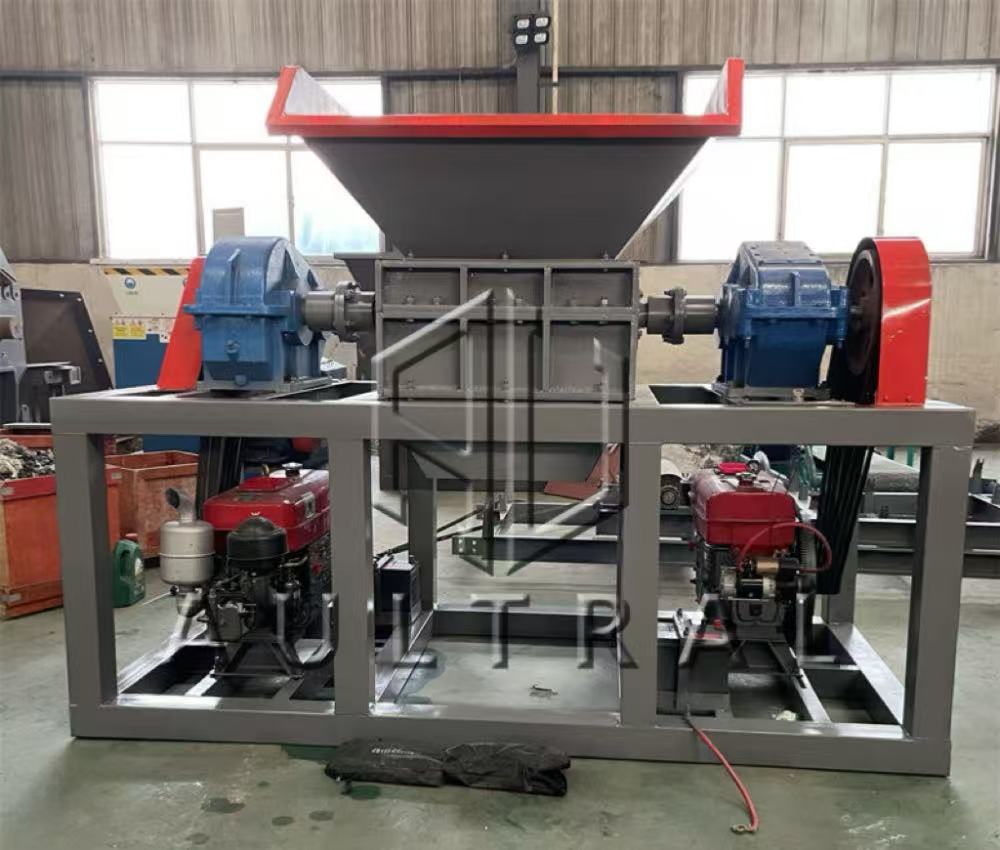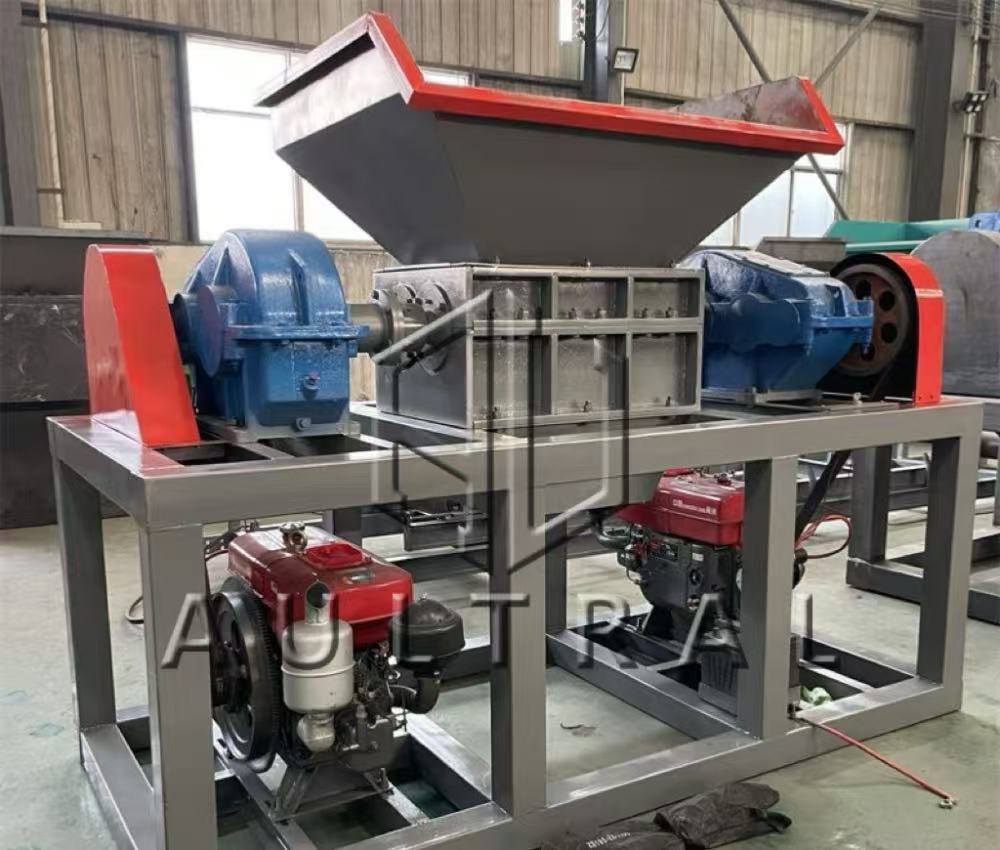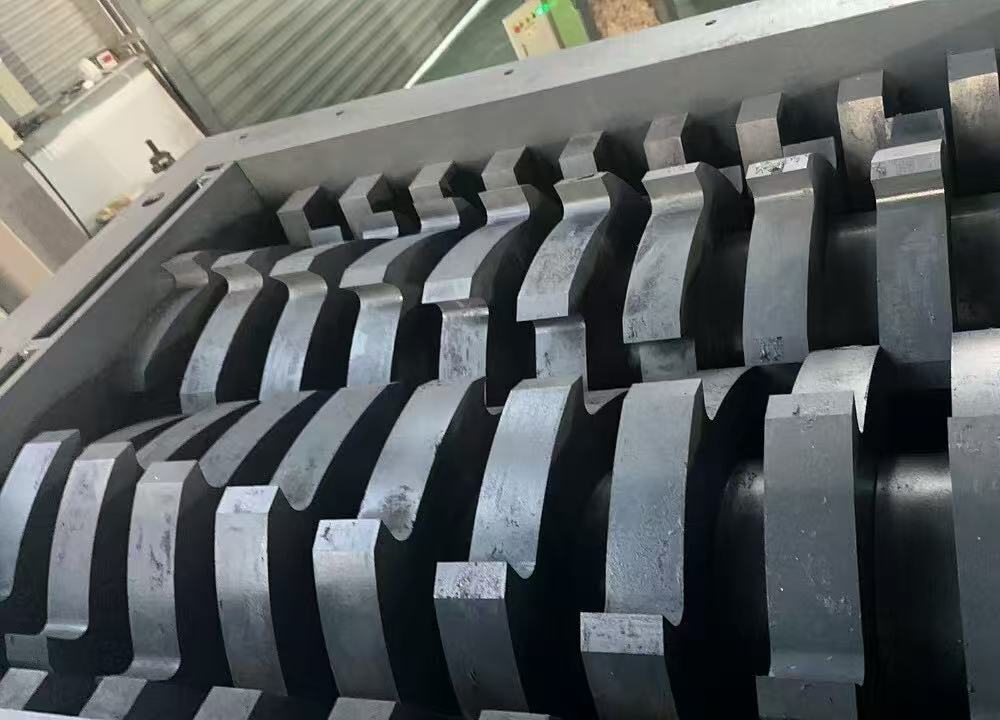What Is A Metal Shredder Machine

A metal shredder machine is an industrial recycling equipment designed to reduce the size of scrap metal into smaller and manageable pieces. It uses powerful rotating blades and high-torque motors to break down bulky metal waste into uniform fragments. These machines are widely applied in recycling plants, scrap yards, and manufacturing industries to process various types of metal, such as aluminum, steel, copper, and iron.
Unlike manual cutting or torching, a metal shredder offers consistent size reduction, higher efficiency, and safer operations. The shredded metal can be transported easily, melted down faster, and reused in new production cycles, supporting the global push toward circular economy and sustainable manufacturing.
Why A Metal Shredder Machine Is Important

Enhancing Recycling Efficiency
A metal shredder significantly increases the speed of recycling operations. Instead of handling bulky scrap, industries can reduce metals into compact sizes that are easier to store, transport, and melt.
Cost Reduction In Logistics
Large, irregular scrap occupies more storage space and raises transport costs. Shredding reduces the volume of scrap metal, allowing more material to be shipped in one load, lowering fuel and labor expenses.
Environmental Protection
By recycling metals effectively, shredders reduce the need for mining raw ores. This helps preserve natural resources, lowers energy consumption, and decreases carbon emissions.
Improved Safety
Handling sharp, heavy, or oversized scrap manually can cause accidents. A shredder minimizes manual handling, keeping workers safer in recycling facilities.
How A Metal Shredder Machine Works
The working principle of a metal shredder involves controlled tearing, shearing, and compressing actions performed by rotating blades or shafts. The process is as follows:
-
Feeding – Scrap metal is fed into the hopper of the shredder.
-
Cutting/Shearing – Heavy-duty alloy blades rotate at high torque, breaking down the metal into smaller pieces.
-
Screening – The shredded pieces pass through a screen or grate, ensuring uniform output size.
-
Collection – The processed metal is discharged onto a conveyor or directly into containers for transport or further processing.
Depending on design, shredders may be single-shaft, double-shaft, or four-shaft, each offering different capacities and cutting styles.
How To Use A Metal Shredder Machine Safely

-
Check The Machine Before Use – Inspect blades, shafts, and motors for wear or damage.
-
Feed Materials Correctly – Load scrap metals steadily, avoiding oversized or prohibited materials.
-
Avoid Overloading – Excess input may strain the motor and damage components.
-
Use Proper Safety Gear – Operators should wear gloves, goggles, and ear protection.
-
Maintain Regularly – Lubricate moving parts, sharpen or replace blades, and check electrical systems frequently.
Following these steps ensures safe and efficient operation, extending the lifespan of the shredder.
Types Of Metal Shredder Machines
Single-Shaft Shredder
Designed for precision shredding, this type uses one rotating shaft with sharp blades. It is ideal for controlled output sizes and moderate capacity needs.
Double-Shaft Shredder
Equipped with two counter-rotating shafts, this type can handle bulky, tough scrap with high efficiency. It is widely used in scrap yards and recycling facilities.
Four-Shaft Shredder
Built for heavy-duty industrial recycling, the four-shaft shredder can process large quantities of metal continuously. It ensures uniform shredding and high throughput.
How Customers Can Choose The Right Metal Shredder
When selecting a shredder, customers should carefully evaluate their recycling needs and operational environment. Key factors include:
-
Type Of Metal Waste
-
Thin materials like aluminum cans require smaller, high-speed shredders.
-
Thick or bulky scrap like car bodies requires double-shaft or four-shaft machines.
-
-
Capacity Requirements
-
Estimate daily or hourly processing volume.
-
Small facilities may need 500–1000 kg per hour, while industrial operations may require several tons per hour.
-
-
Output Size Preference
-
If uniform small fragments are required for smelting, choose machines with adjustable screens.
-
If size is not critical, a heavy-duty shredder without fine screening may be sufficient.
-
-
Available Space And Power Supply
-
Check installation dimensions and confirm that your facility can provide the required electrical power.
-
Larger shredders may need three-phase industrial power.
-
-
Automation Level
-
Manual loading suits small operations.
-
For large-scale recycling, consider systems with conveyors, feeders, and automatic discharge.
-
-
After-Sales Support
-
Choose suppliers who provide blade replacement, motor parts, and technical service.
-
Reliable after-sales support ensures minimal downtime.
-
How To Match The Right Shredder With Customer Needs
The correct shredder depends on balancing scrap type, volume, and budget. For example:
-
Clothing Manufacturer With Metal Buttons: A small single-shaft shredder is sufficient to separate and process light scrap.
-
Automobile Recycling Plant: Requires a double-shaft shredder capable of crushing car frames, engines, and mixed heavy scrap.
-
Aluminum Can Recycling Facility: A medium-capacity single-shaft shredder works best for high-speed processing of lightweight cans.
-
Steel Mill Scrap Handling: A four-shaft shredder ensures continuous operation with large volumes of industrial off-cuts.
Matching the right shredder ensures efficiency, reduces energy consumption, and maximizes return on investment.
Maintenance And Longevity Tips
-
Replace blades on time to maintain cutting efficiency.
-
Keep the motor and gearbox clean and lubricated.
-
Avoid feeding prohibited materials like stones, glass, or plastic unless the shredder is designed for them.
-
Conduct routine inspections to detect wear early.
A well-maintained shredder can operate reliably for 10–15 years.
Investment Value And Future Trends
Investing in a metal shredder machine is not only about improving efficiency today but also about preparing for the future of recycling. Global demand for recycled metals is rising every year as industries seek to cut costs and comply with environmental regulations. Governments are implementing stricter policies on waste management, making efficient recycling equipment a necessity rather than an option.
A modern shredder also allows companies to diversify income. By processing scrap in-house, businesses can sell shredded metals at higher market value compared to unprocessed scrap. The return on investment is often realized within a few years, depending on processing volume and local scrap prices.
Technology in shredders is also advancing. New models feature energy-saving motors, smart monitoring systems, and stronger wear-resistant blades. These innovations reduce maintenance costs and extend machine life. Businesses that invest in advanced shredders today will remain competitive in tomorrow’s recycling market.
Conclusion
A metal shredder machine is an essential piece of equipment for modern recycling industries. It reduces bulky scrap into manageable fragments, saves costs, improves safety, and supports environmental sustainability.
Choosing the right shredder depends on metal type, processing volume, output size, and facility conditions. By carefully evaluating these factors and matching them with supplier expertise, customers can ensure that their investment delivers maximum efficiency and long-term value.
